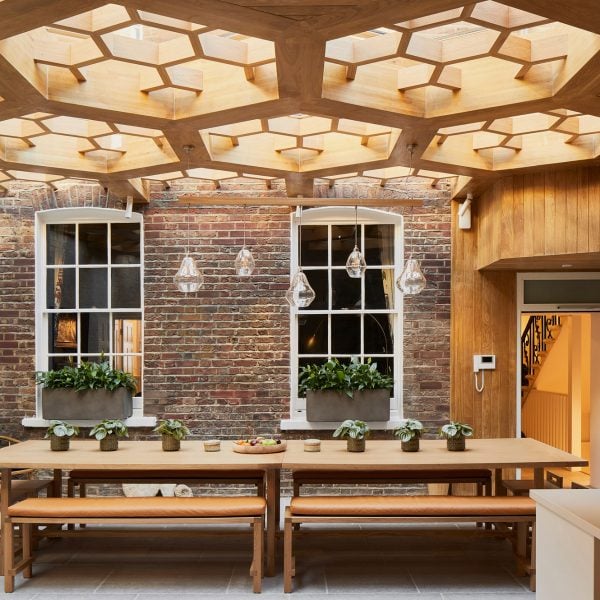London studio SPPARC has overhauled a Grade II-listed Georgian townhouse in Fitzrovia to create a homely four-story office featuring a honeycomb-shaped roof.
Designed for a family-run business, the project reverses a “tired and outdated” renovation of the home near Charlotte Street Conservation Area from the 1990s.
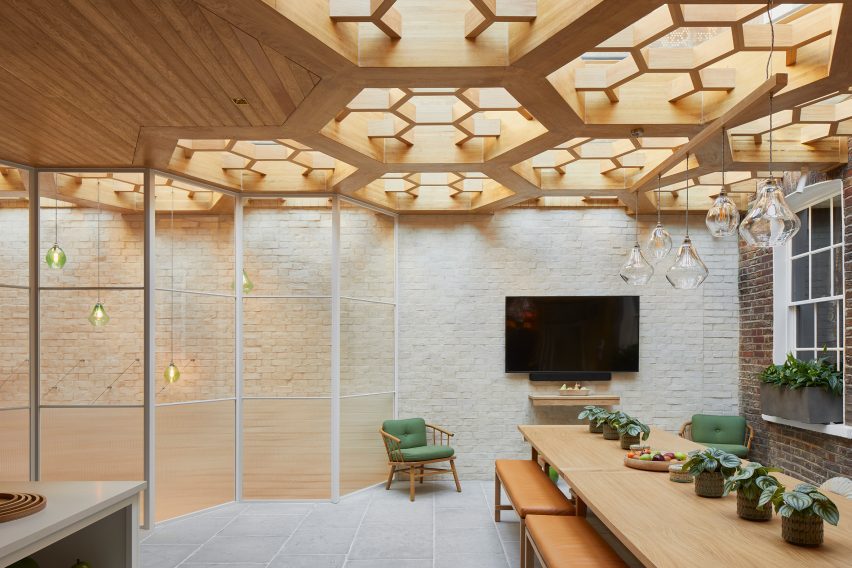
The heart of the project is a collaborative workspace on the ground floor, which SPPARC has housed in a rear extension. It is illuminated by an array of skylights set in a hexagonal roof structure resembling honeycomb.
This replaces an “incongruous” extension added in the 1990s and doubles as an accessible first-floor terrace.
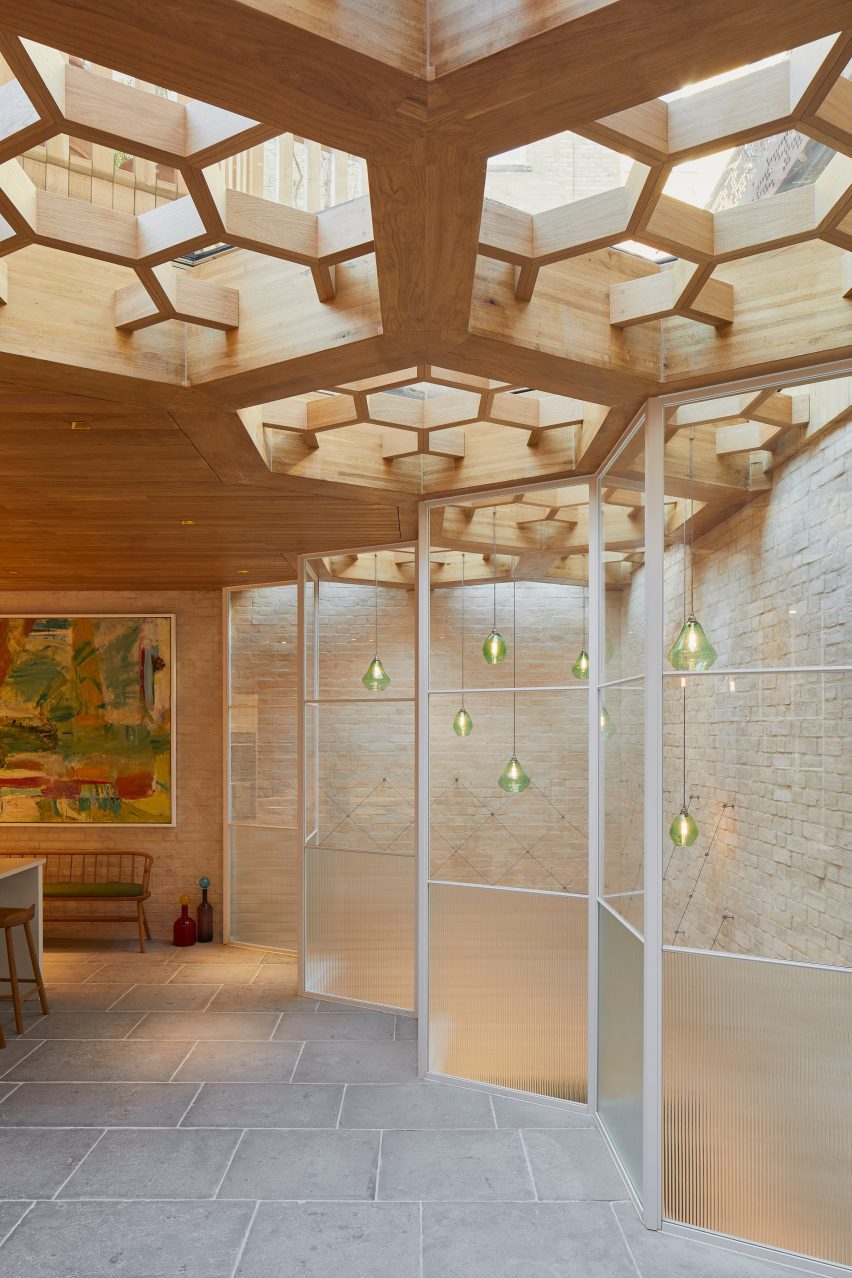
The vision for the Fitzrovia project was the potential for a heritage building to be carefully adapted to provide interactive workspace,” studio founder Trevor Morriss told Dezeen.
“The Grade II-listed Georgian building was subject to a low-quality refurbishment in the 1990s which included an incongruous rear extension under a glass pyramid structure,” he said.
“Once cleared from the 1990s glass and steel infill, the rear courtyard was the perfect opportunity to create our own hive for the family office – a collaborative social space to inspire and prompt community.”
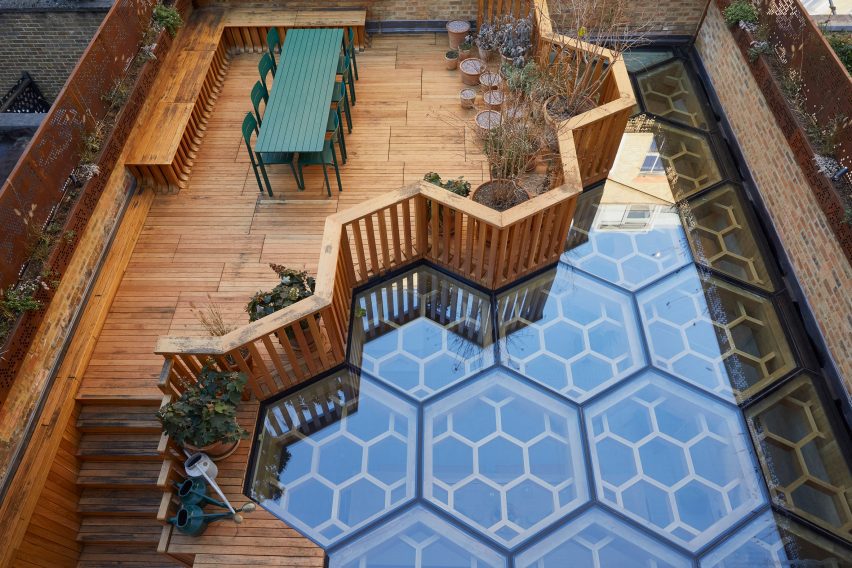
Responding to the client’s brief requesting a working environment with a domestic scale, SPPARC carved a mix of communal and private workspaces into the plan.
The upper levels of the building are now used as private rooms for the family office, while the basement and ground floor have been opened up as spaces for collaboration.
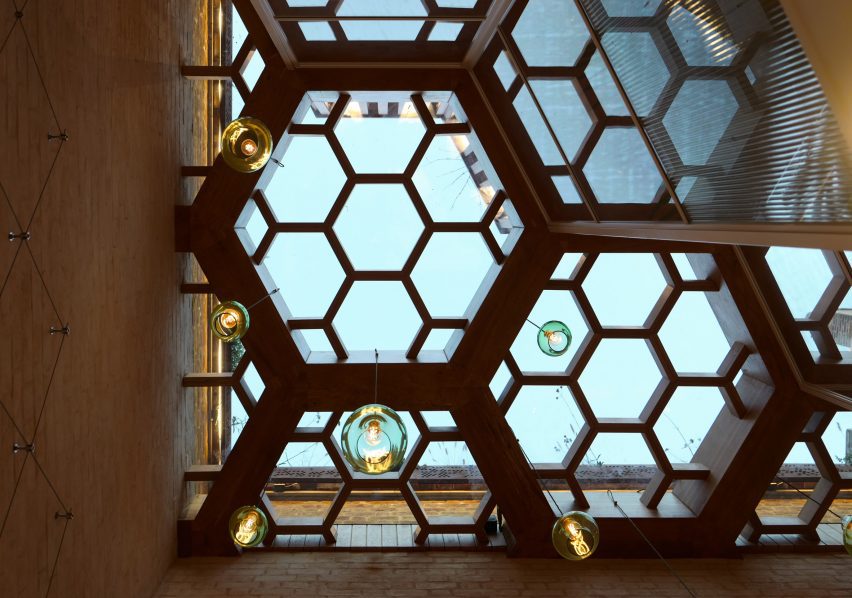
Crafted from oak beams, the roof of the extension is a self-supporting structure. On one side, it forms a lightwell for the basement.
“The main challenge faced when developing the timber honeycomb design was the constrained site,” SPAARC explained.
“It required a design method that could be broken down into small manageable pieces and manually lifted through the existing building over a series of weeks, with the feature held together by restraint nodes and tension rods concealed in each of the timber lengths.”
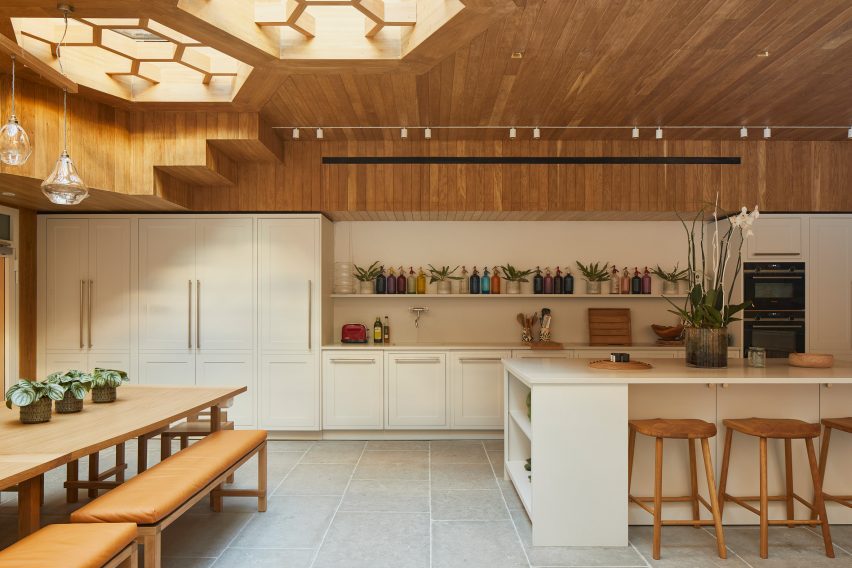
In the rest of the building, SPPARC worked to reinstate elements from the original Georgian design lost in previous renovations by referring to historical documents.
Its cantilevered stone stairs were restored, along with coving mouldings and external windows and walls.
Contemporary additions to the building include glass screens, used to soften internal partitions, teamed with warm oak joinery, terrazzo basins and bold colour-drenched walls.
Oak is also used outside on the roof terrace, where timber decking and balustrades wind around the honeycomb skylights.
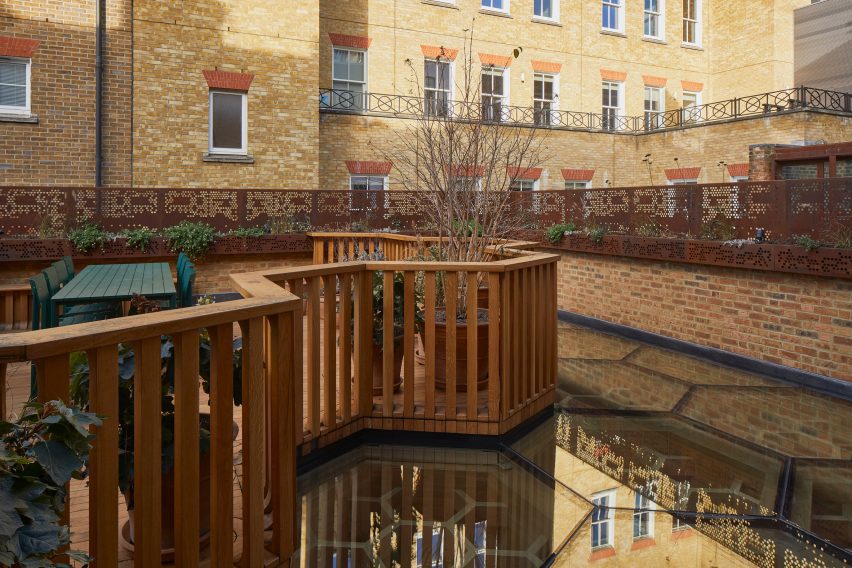
“The sensitive refurbishment of the listed building and its features was a priority,” SPAARC explained.
“But there was a definite design move to create an extension that adopts a modern style, using a traditional material and hand-crafted details.”
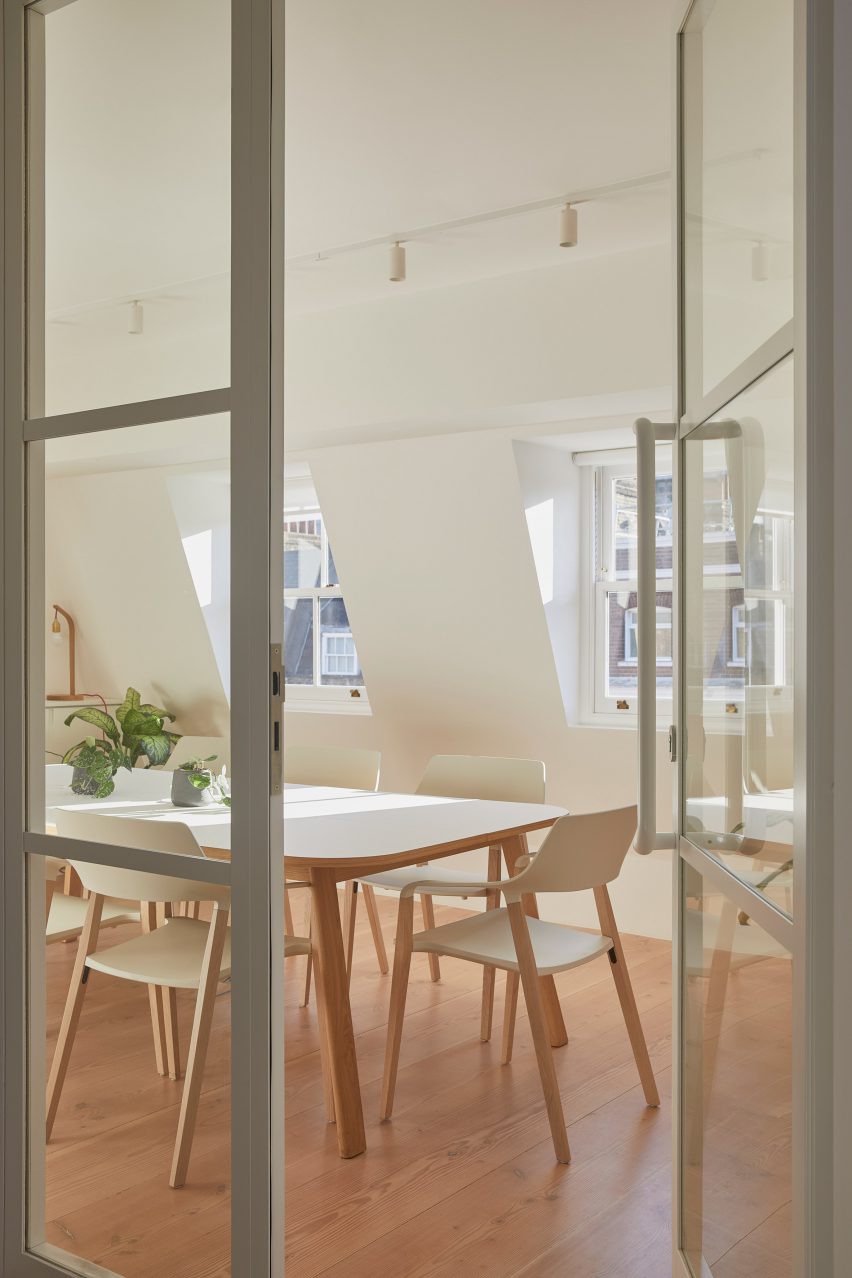
Elsewhere, Texas studio Michael Hsu Office of Architecture also recently converted a 110-year-old bungalow into “an office that felt like a home.
Other projects by SPAARC, a London studio founded in 2007, include Borough Yards shopping district in London and the Golden Hinde visitor centre, which will cantilever over the River Thames.
The photography is courtesy of SPPARC.

